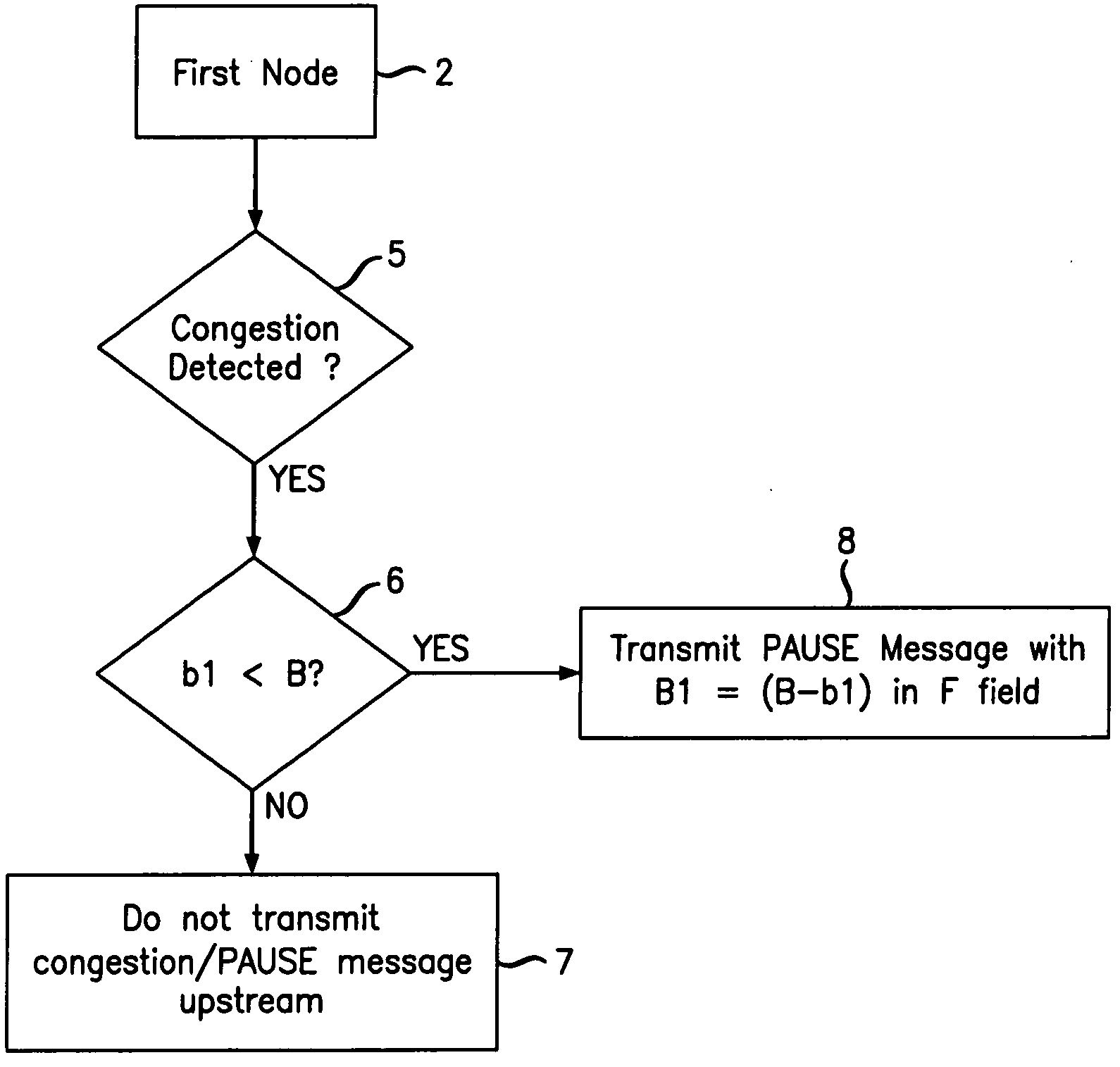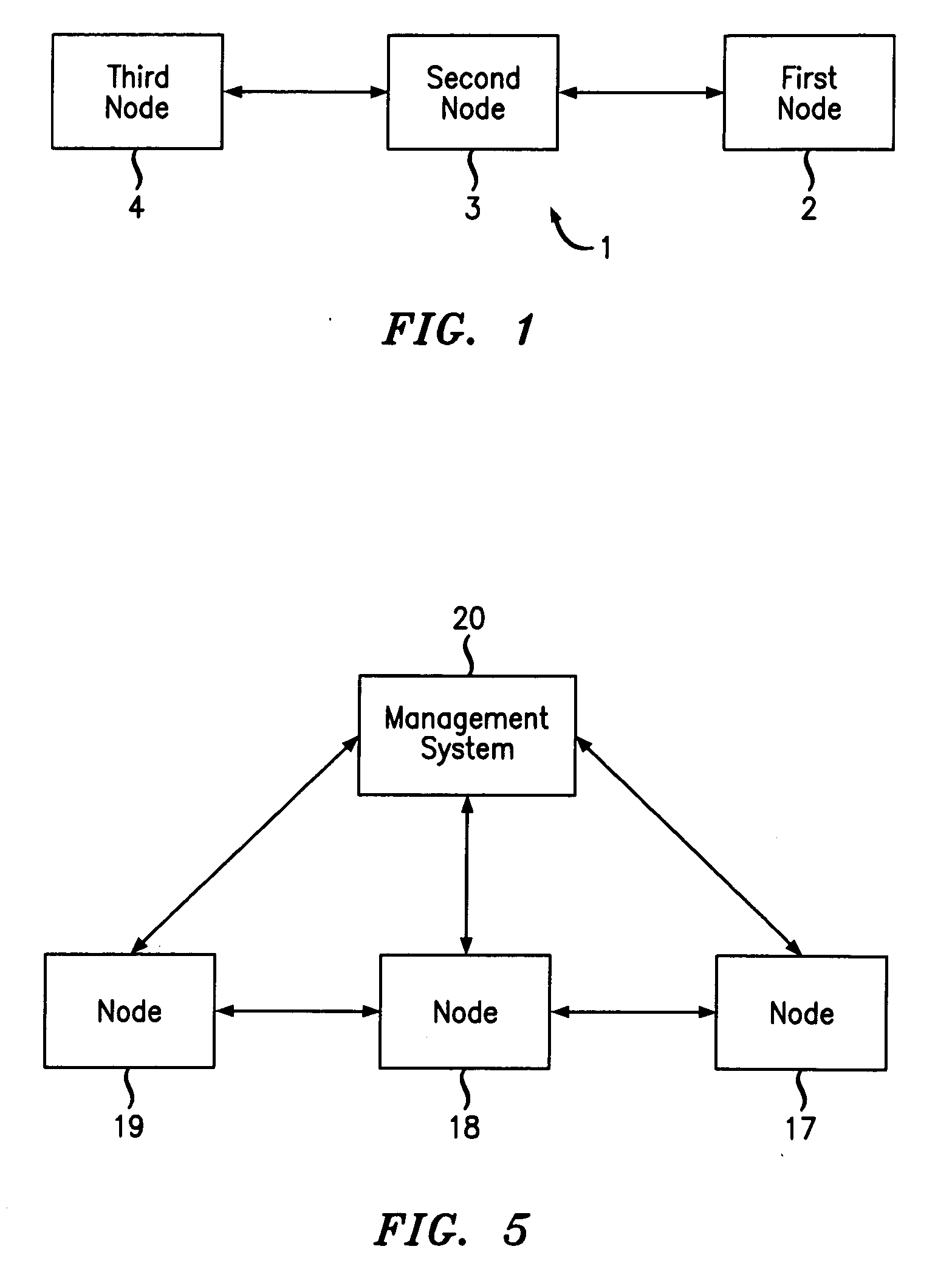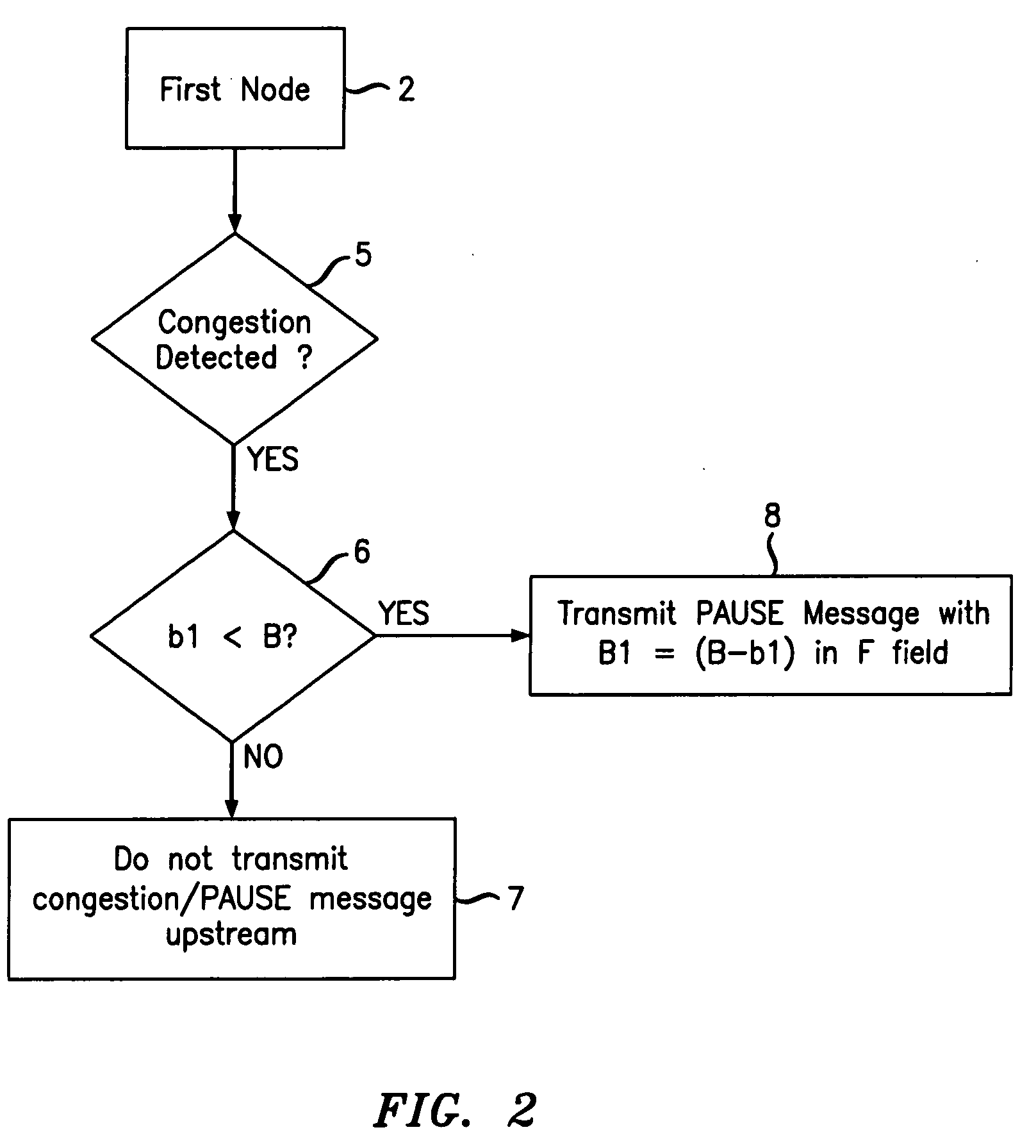Controlling congestion in a packet switched data network
a packet switched data network and congestion control technology, applied in data switching networks, frequency-division multiplexes, instruments, etc., can solve the problems of high latency, difficult to achieve the optimization of buffer sizes in routers, switches or bridges, and higher costs for those network elements that include, so as to reduce congestion, reduce congestion, and reduce likelihood
- Summary
- Abstract
- Description
- Claims
- Application Information
AI Technical Summary
Benefits of technology
Problems solved by technology
Method used
Image
Examples
Embodiment Construction
[0017]With reference to FIG. 1, a data network 1 operating in accordance with the Ethernet protocol includes a plurality of nodes 2, 3 and 4, each of which includes a buffer at which frames are temporarily stored. Each node has an indicator for detecting the amount of the buffer capacity that is occupied and the amount which is free and available to be used to hold incoming data packets. The nodes may be routers, switches, bridges, or other network elements where data packets are required to be held. The first node 2 is downstream of the second node 3, receiving data packets therefrom. Similarly, the second node 3 is downstream of a third node 4. In practice, a node may connect to more than one other node in an upstream or downstream direction.
[0018]The first node 2 receives frames, or data packets, from the second node 3. If these are transmitted at too great a rate, the first node 2 becomes congested because there is insufficient buffer space remaining at the first node 2. The exi...
PUM
 Login to View More
Login to View More Abstract
Description
Claims
Application Information
 Login to View More
Login to View More - R&D
- Intellectual Property
- Life Sciences
- Materials
- Tech Scout
- Unparalleled Data Quality
- Higher Quality Content
- 60% Fewer Hallucinations
Browse by: Latest US Patents, China's latest patents, Technical Efficacy Thesaurus, Application Domain, Technology Topic, Popular Technical Reports.
© 2025 PatSnap. All rights reserved.Legal|Privacy policy|Modern Slavery Act Transparency Statement|Sitemap|About US| Contact US: help@patsnap.com



